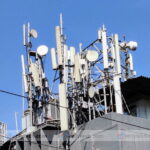So the day of the Indian telecom spectrum auction has finally arrived, this time after a gap of nearly 5 years as the last auction was held in 2016. A lot has changed in the telecommunication sector since then, we are now down from an 11 player to a 4 operator market as consolidation kicked in after Reliance Jio entered the telecom space in 2016. Today the DoT has put up for sale a total of 2308.80 MHz of spectrum across 7 frequency bands at a base price of over 4 lakh crores. All 3 private operators will battle against each other to secure their share of the spectrum while the lone PSU operator will not be a part of the bidding process.
It has been 54 days since the notice inviting applications (NIA) was released by the DoT, which was followed by private operators Reliance Jio, Bharti Airtel and Vodafone Idea submitting applications to participate in the auction. Upon being pre-qualified, all operators paid an earnest money deposit (EMD) which got them eligibility points to be able to bid for spectrum in the auction. Jio paid the highest EMD of Rs 10,000 Cr, Airtel paid Rs 3000 Cr and Vi Rs 475 Cr which will allow them to buy spectrum worth up to Rs 70,000 Cr, Rs 21,000 Cr and Rs 3,300 Cr respectively.
What’s happening behind the scenes right now?
All 3 operators have set up war rooms in their corporate offices where all the strategic planning and bidding action is ongoing. The bidding process happens in clock rounds where the first 5 rounds are typically 90 mins each and subsequent ones are 60 mins each, with a 20 min gap between two subsequent rounds. A typical auction day sees up to 8 clock rounds of bidding. During each clock round, all operators place bids for their desired number of blocks in the spectrum band of their choice subject to their eligibility (based on the EMD and eligibility points required for that spectrum).
At the end of the clock round if the demand for spectrum in a particular band in a particular circle is less than the availability of spectrum, then for the subsequent round there is no increment in the bid price and spectrum will still be available at base price. If the demand for blocks is equal to or exceeds the availability then depending on the spectrum band and the number of blocks by which the demand exceeds the availability, there will be a positive increment ranging between 0.5% to 6.5% over the base price which will be applicable to the subsequent clock round. The auction ends when there is no excess demand in any of the bands in any circle.
Typically the bidding process for the day ends around 7.30 PM and DoT releases the daily report following that. We at OnlyTech will bring to you the latest updates on the auction in real-time so stay tuned.









Noice! how many days will auction go on? @esmail
The 2010 auction went on for over a month, that had limited spectrum and too many bidders. This one is the exact opposite, abundant spectrum and too few bidders. I wouldn’t be surprised if it ended today or tomorrow itself.